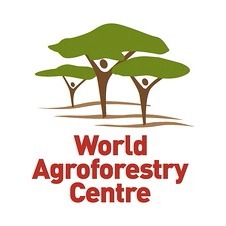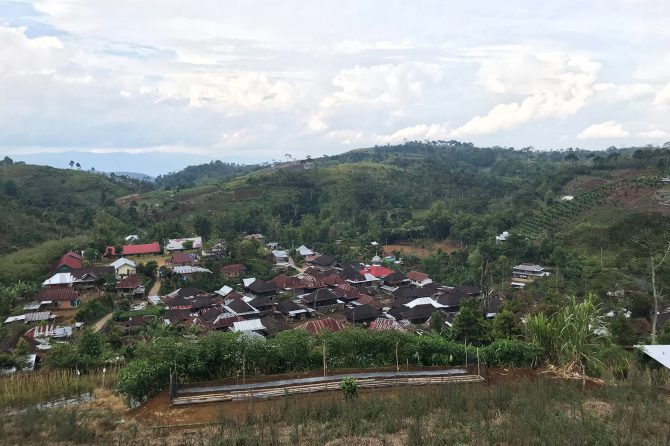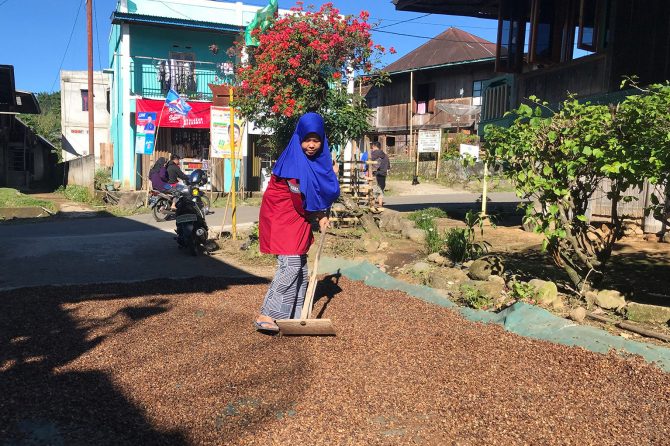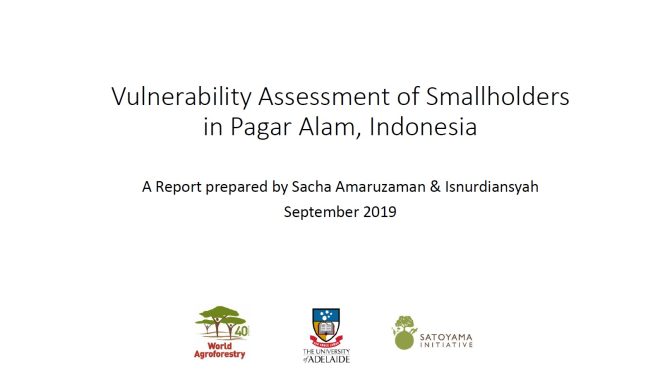2018 INDONESIA
Enhancing Upland Adaptation to Multidimensional Shocks and Stressors for Improving Livelihood and Landscape
World Agroforestry Centre (ICRAF)
Research activities
Landscape
Overview
Pagar Alam is an upland coffee production area, located in the upstream of Musi, one of the largest and critical watersheds in Sumatra, Indonesia. This area faces various environmental and economic challenges that contribute to smallholders’ vulnerability. The previous capacity building initiative for local farmers by the government was mainly focused on productivity and quality, without integrating any strategy to improve farmers’ resilience or any strategy on landscape conservation. Therefore, this project undertook vulnerability and farming profitability assessments to gain a better understanding of smallholders’ vulnerability. The assessment indicated the need to reduce socio-economic vulnerability to lower the threat of degradation towards the upland landscape, by connecting smallholders to a better coffee market. Based on the assessment results, the team collaborated with NedCoffee and Starbucks Farmers Support Centre to organise a Sustainable Coffee Workshop for coffee stakeholders. The project also facilitated coffee farmer groups to access a better coffee market as well as access funding from the banking sector. The project shows that vulnerability to socio-economic shocks could drive further environmental degradation, and that adaptation requires a holistic approach taking into account local livelihood and landscape integrity. Opportunities are available to link the commodity market with initiatives to maintain landscape quality while improving the local livelihood through sustainable agricultural practices. A multi-scale collaboration with the government and private sector is required to promote the approach.
Key achievements
The project has gained several important achievements, such as:
- Linking market expectations with the landscape conservation efforts
- Multi-scale collaboration with the private sector, including NedCoffee and Starbucks Farmers Centre, thereby strengthening farmers’ capacity and raising their awareness regarding sustainable farming practices
- Improved understanding of the vulnerability of smallholders in the upland region of Indonesia
- Gaining financial support from the banking sector as the seed fund to access a better market
Lessons
There are at least three key lessons generated from the project activities:
- Upland smallholders’ vulnerability to socio-economic shocks could drive further environmental degradation through short-term intensive farming practices. Adaptation to such vulnerability requires a holistic approach that takes into account local livelihood and landscape integrity.
- Opportunities are available to link the commodity market with initiatives to maintain the upland landscape quality while improving the local livelihood through sustainable agricultural practices.
- Multi-scale efforts involving various stakeholders are required for improving farmers’ resilience. Capacity building at the community and government level is necessary to establish an enabling environment for resilience.
Project location
Organisation

World Agroforestry Centre (ICRAF)
- Sector
- UN/Intergovernmental
- Country
- Kenya
- Website/SNS
- http://www.worldagroforestry.org/
Related products
Fieldwork stories from South Sumatra
- Publisher
- The Centre for Global Food and Resources
A blog article about the workshop on the website of Centre for Global Food and Resource, UofA
Vulnerability Assessment of Smallhoders in Pagar Alam, Indonesia
- Publisher
- World Agroforestry Centre (ICRAF)
The vulnerability assessment consists of the in-depth interview, observation, and focus group discussion (FGD) with the smallholders from July to December 2018. From July to August 2018, 23 persons were interviewed as the key informants. The interviews were undertaken to 11 government representatives (Planning Office, Forest Management Unit, Environmental Office, Agricultural Office, and Municipalities), and 13 local community leaders, coffee traders, and cooperative.
Eight upland villages in the forest margin were selected as the location of the FGDs (see the VA report for the FGD location map). These villages represented the different socio-economic and socio-ecological characteristic of Pagar Alam upland, with a proximity to the forest. About 173 farmers, 83 female and 90 female farmers joined the focus group discussions. Each group consists of 8 to 13 participants in each village, disaggregated by gender. The VA findings indicated that the smallholders in Pagar Alam were mainly vulnerable towards the price fluctuation and changing climate pattern. The coffee agroforestry system, however, is threatened by the expansion of seasonal crops, which provide better short-term income but might generate environmental risks, such as climate change and soil-water degradation. Based on the findings, the team formulated practical recommendations to improve farmers’ capacity and awareness on sustainable coffee, as well as their access to better coffee market. As a result, follow-up actions were carried out with support from the SDM Grant.
Relevant projects
Projects of the same year
Aichi Biodiversity Targets
Aichi Biodiversity Targets
-
Habitat loss halved or reduced
-
Sustainable agriculture, aquaculture and forestry
-
Ecosystems and essential services safeguarded
Sustainable Development Goals
Sustainable Development Goals
-
Zero hunger
-
Responsible consumption, production
-
Life on land


